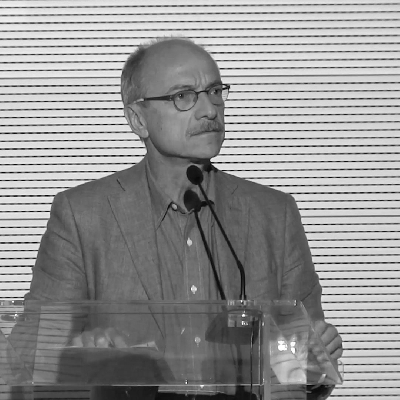The issue of fighting starvation is still at the forefront, pushed by the quantitative rationale that caused the problem. We have often heard the old refrain that we need to produce more because population will grow as well as per capita consumption. We are all too familiar with the adage according to which the pollution problems created by agriculture are on the rise as well as the old cliché that one third of food is lost in its journey from the field to the table. As if we were talking about independent mechanisms, without trying to pinpoint the connections between greater aridity that every year causes a loss of 24 billion tonnes of fertile soil and the asymmetries that engender lack of food in one billion people, while an additional billion people suffer from lack of food.
Such connections have social (70% of food production is ensured by small farmers), environmental (one fifth of the productive fields is irrigated and the irrigation cycle, already in crisis, is threatened by climate change) and economic (the race towards lower and lower prices is not enough to beat poverty and does not contribute to protect the health of individuals) implications.
By linking these aspects, a wider and more compact front against waste could be presented. It’s not just about not wasting food. We must not dissipate water, energy, fertile soil and social cohesion by forcing the production cycles, disregarding the overal results in the medium term: to get a clear picture of this risk, flicking through history books (from irrigation excess in the Fertile Crescent to the hundreds of species of insects that have developed DDT resistance) should be enough.
A circular vision of the agrarian economy can help build a more solid model for reviving production and agriculture. Perhaps by eliminating the barriers and controversies surrounding these opposing worlds, especially since the crop share destined for energy has been rising, with a peak stimulated by USA subsidies for corn which around 2007 caused cereal prices to skyrocket, generating the tortilla revolution with the slogan “not even a square metre of farmland for energy”. A battle for soil that belongs to a technologically-outmoded world, as it can be inferred by the Manifesto of the Green Economy on Agri-food for the Occasion of Expo 2015, circulated by the National Board for the Green Economy.
The above-mentioned manifesto deals with a bioeconomy based on the valorization of biomasses from different sources used to generate renewable energies and to supply materials for a host of activities (from handicrafts to green chemistry). It also states that “such activities – when integrated and sustainable for the environment and not stealing land and productions for food – can contribute to improving the protection and care for the environment, to the recovery of marginal and degraded areas and offer added income opportunities for farmers while helping to hinder rural depopulation”.
Biorefineries – Italy is the leading country in this field – are an advanced version of such sustainable activities: they are able to reuse agricultural residues or to obtain crops without using water and phytopharmaceuticals on abandoned soils in a series of “cascade” processes where each time previous-cycle products are employed in order to obtain useful materials in various production cycles.
Such vision of a circular economy integrating food in the whole production system can provide a huge contribution to the battle against waste of matter and energy, helping to find a solution to the conundrum raised by Expo 2015: nourishing a planet with an ever-increasing population with less and less resources and with climate change looming ahead. To fight starvation, producing more food is not enough: we need to look beyond food, thus guaranteeing social cohesion and a balance of ecosystems.
As Vandana Shiva put it in the Manifesto Terra Viva: “The new agriculture replaces the linear process of exploitation of soil and resources with a circular returning process that guarantees resilience, sustainability, justice and peace. Such new agriculture is part of a process aiming at redefining the concept of democracy and freedom. In the old atomistic and mechanistic notion, my freedom ends where yours begins. In the new notion, based on the circular economy and on the growing role communities are playing, my freedom begins where yours begins and includes freedom of the soil and of all species”.
Manifesto of the Green Economy on Agri-food for the Occasion of Expo 2015, downloadable document from tinyurl.com/poh8wmy
Manifesto Terra Viva by Vandana Shiva, available online tinyurl.com/njktfz5


